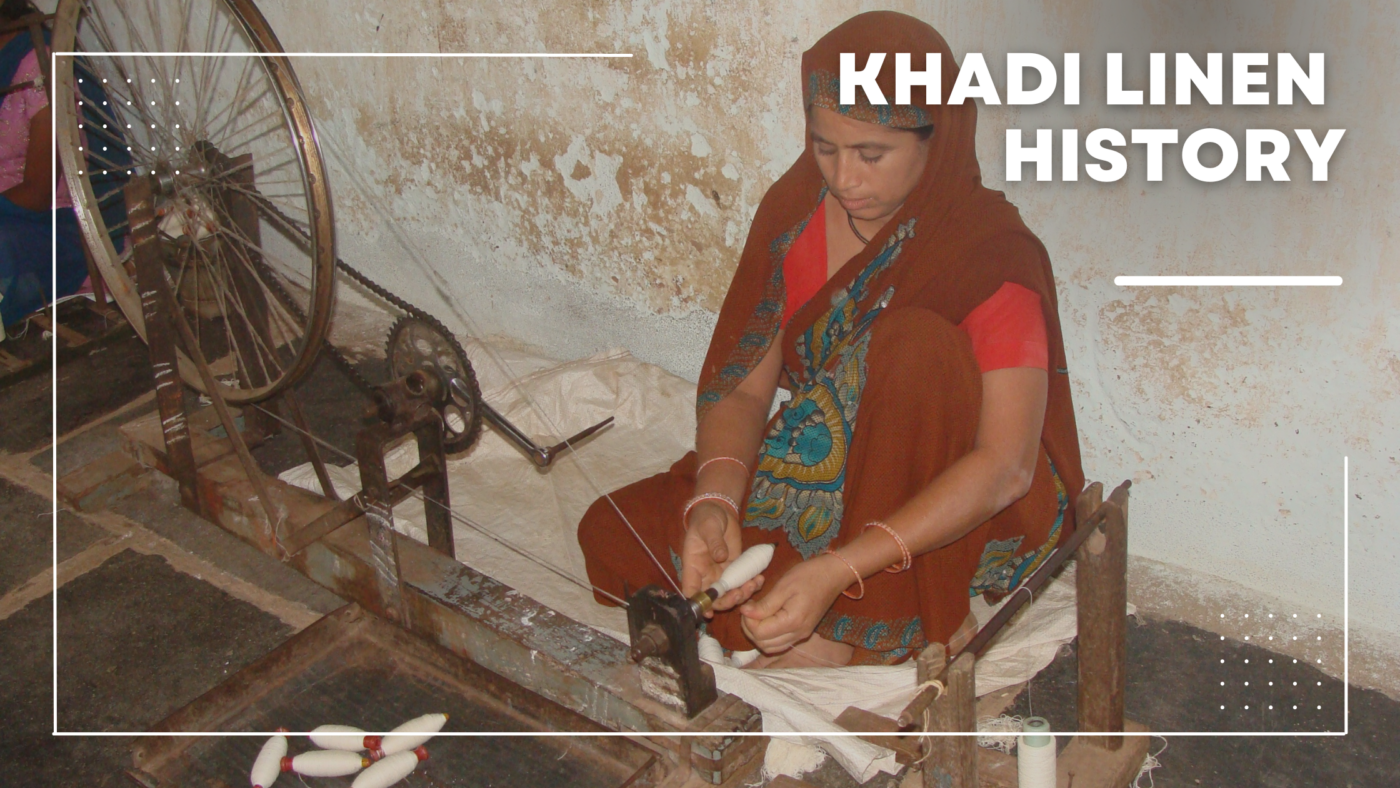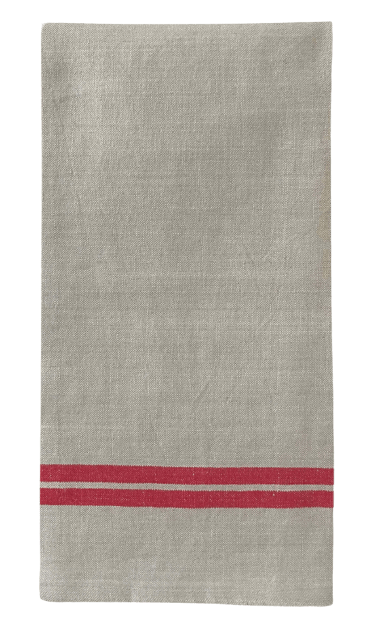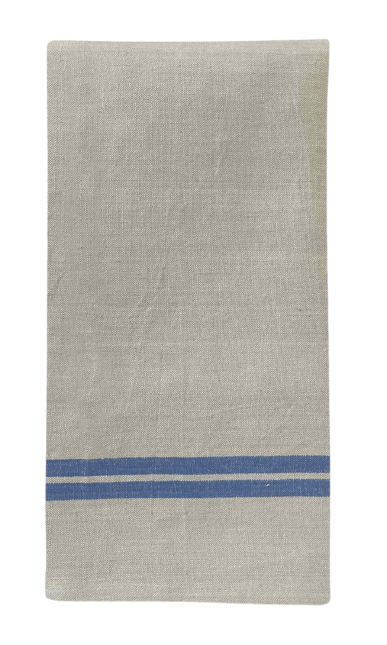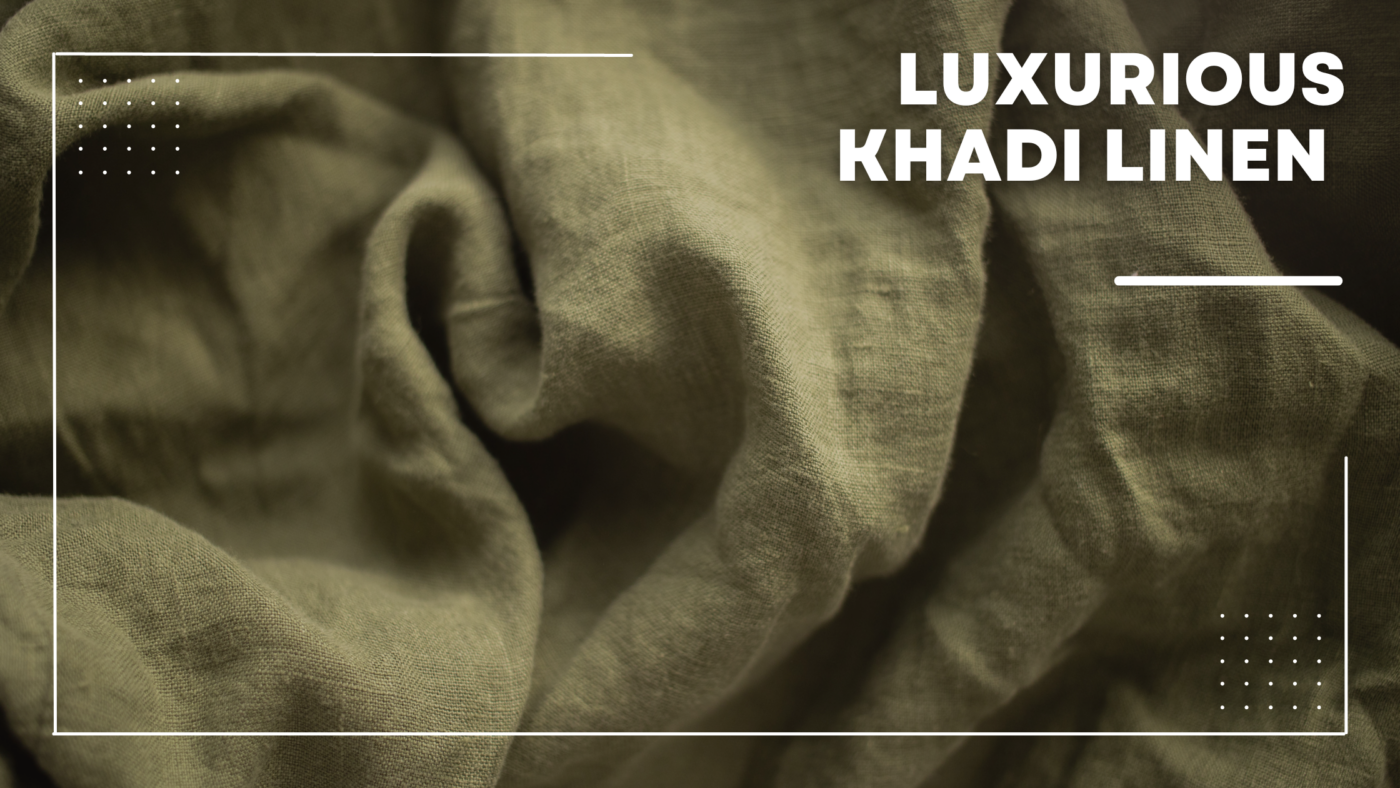Blog
Khadi Linen Napkins
Product Article - Flour Sack Towels

4.98
Linen, or Khadi Linen Napkins, the luxurious fabric known for its durability & elegance, has a rich history that spans centuries. From ancient Egypt to modern-day fashion, linen has been a staple in the textile industry.
It all began in ancient Egypt, where linen was considered a symbol of wealth and nobility. The Egyptians used linen to make clothing, sheets, & even mummy wrappings. They also believed that linen had purifying properties & would use in religious ceremonies.
As civilization progressed, linen made its way to ancient Greece & Rome. It was used to make clothing for the elite, as well as for everyday use. The Romans even used linen to make sails for their ships, proving its strength & durability.
The Middle Ages saw a resurgence in linen production, with monasteries and nunneries becoming major fabric producers. Linen was used for clothing, linens, and even paper.
Fast forward to the 17th and 18th centuries, and linen became a staple in the fashion industry. It was used to make elegant dresses and suits for the upper class, and linen was also a popular fabric for men’s shirts and handkerchiefs.
Linen remains a popular choice for clothing, home decor, and even industrial uses, and its eco-friendly properties have made it a favorite among sustainable fashion and home decor enthusiasts. And it’s not just for the elite anymore; linen can be found in different price ranges, making it accessible to everyone.
What is Khadi Linen’s History

Khadi linen, a fabric known for its natural beauty and sustainability, has a history rooted in social and political revolution. It’s a fabric that looks not only good but also does good.
The story of khadi linen begins in India during the early 20th century. Mahatma Gandhi, the leader of India’s independence movement, encouraged the production of khadi linen to promote self-sufficiency and economic empowerment for the rural population. He believed that if the people of India could produce their clothes, they would be less dependent on imports and more self-sufficient.
During the Indian Independence Movement, Khadi linen became a symbol of defiance against British rule and a source of national pride.. It was worn by leaders of the movement and became a symbol of the struggle for freedom.
Today, khadi linen continues to be a symbol of sustainability and social change. It’s produced using traditional hand-spinning & hand-weaving &, which not only preserves traditional craftsmanship but also creates jobs for rural communities. And because it’s made from natural fibers, it’s an eco-friendly alternative to synthetic fabrics.
But khadi linen isn’t just for political activists & eco-warriors; it’s also a stylish & versatile fabric for various clothing & home decor items. From breezy summer dresses to elegant napkins, khadi linen adds a touch of natural beauty to any item.
In conclusion, khadi linen has a rich history rooted in social & political revolutions. It’s a fabric that looks good & does good, promoting self-sufficiency & economic empowerment for rural communities. Its eco-friendly properties & traditional hand-spinning & hand-weaving techniques make it a sustainable choice for clothing & home decor. So, the next time you’re looking for a new piece of clothing or a stylish napkin, consider khadi linen, a fabric.
Elevate Your Table Setting with Khadi Linen Napkins



Are you tired of using boring, disposable napkins at your dinner parties? It’s time to elevate your table setting with the natural beauty and elegance of khadi linen napkins.
Khadi linen napkins are not only stylish, but they’re also sustainable. Made from natural fibers and produced using traditional hand-spinning and hand-weaving techniques, these napkins are an eco-friendly alternative to disposable options. Plus, the production of khadi linen supports rural communities and promotes self-sufficiency.
But let’s talk about aesthetics. Khadi linen napkins add a touch of natural beauty to any table setting. The natural color variations and subtle texture of the fabric give it a unique, organic look. And because they’re made from linen, they’re durable and long-lasting, so you won’t have to replace them as often as disposable options.
Give Khadi linen napkins a try and witness their power to transform your table setting. Whether it’s a dinner party or a casual meal with family and friends, you’ll be astonished at the improvement they make.
Discover the Beauty and Durability of Khadi Linen NapkinsWhen it comes to napkins, durability and beauty are not often associated with each other. But with khadi linen napkins, you don’t have to choose between the two. These napkins are not only stylish but they’re also built to last.
Khadi linen napkins are made from natural fibers and are produced using traditional hand-spinning and hand-weaving techniques. This not only preserves traditional craftsmanship but also makes them durable and long-lasting. They can withstand multiple washes and use, and unlike disposable napkins, they won’t fall apart after just one use.
Khadi linen napkins offer a special, organic aesthetic to any table setting. The natural hue variations and delicate texture of the material bring a unique charm to any gathering. They are also made with linen, making them highly absorbent and breathable, making them ideal for any occasion.
Don’t just take our word for it. Try them out for yourself and see the difference khadi linen napkins can make. Use them for your next dinner party or a casual meal with family and friends. You’ll be impressed by how well they hold up and how much they elevate the look and feel of your table setting.
The Eco-Friendly Choice for Your Next Dinner Party
If you’re hosting a dinner party, you don’t have to sacrifice your eco-friendly values in order to have a beautiful table. With khadi linen napkins, you can have a stunning table setting without having to worry about the environmental impact.
Khadi linen napkins are the perfect choice for eco-conscious hosts and hostesses. They’re made from natural fibers and produced using traditional hand-spinning and hand-weaving techniques, and this preserves traditional craftsmanship and makes them an eco-friendly alternative to disposable napkins. Plus, the production of khadi linen supports rural communities and promotes self-sufficiency.
But eco-friendliness doesn’t mean sacrificing style. Khadi linen napkins add a touch of natural beauty to any table setting. The natural color variations and subtle texture of the fabric give it a unique, organic look. And because they’re made from linen, they’re absorbent and breathable, making them perfect for any occasion.
Don’t just take our word for it. Try them out for yourself and see the difference khadi linen napkins can make. Use them for your next dinner party or a casual meal with family and friends. Not only you’ll be impressed by how well they hold up, but you’ll also be happy to know that you’re making an eco-friendly choice.
In conclusion, khadi linen napkins are the perfect choice for eco-conscious hosts and hostesses. They are stylish, durable, and long-lasting, supporting rural communities and promoting self-sufficiency. So, next time you’re planning a dinner party, consider khadi linen napkins as your eco-friendly choice; you won’t regret it.
How to fold linen napkins
Linen napkins are a stylish & elegant addition to any table setting, but knowing how to fold them properly can take your presentation to the next level. Here are a few easy ways to fold linen napkins:
The Classic Fold:
Start with a square napkin & fold it in half diagonally to create a triangle.
Fold the triangle in half again, creating a smaller triangle.
Fold the triangle in half, creating a long, narrow rectangle.
The Fan Fold:
Start with a square napkin & fold it in half diagonally to create a triangle.
Fold the triangle in half again, creating a smaller triangle.
Fold the triangle in half, creating a long, narrow rectangle.
Take the top & bottom corners of the rectangle & fold them towards the center crease, creating a fan-like shape.
The Pyramid Fold: Start with a square napkin & fold it in half diagonally to create a triangle. Fold the triangle in half again, creating a smaller triangle. Fold the triangle in half, creating a long, narrow rectangle. Then, take the top & bottom corners of the rectangle & fold them towards the center crease, creating a fan-like shape. Next, fold the fan in half, creating a pyramid shape.
The Bishop’s Hat Fold:
Start with a square napkin & fold it in half diagonally to create a triangle.
Fold the top corner of the triangle down to the bottom point of the triangle, creating a smaller triangle.
Fold the top corner of the smaller triangle down to the bottom point, creating a cone shape.
The Rose Fold:
Start with a square napkin & fold it in half diagonally to create a triangle.
Fold the triangle in half again, creating a smaller triangle.
Roll the triangle tightly, starting from the point & working towards the top.
Once you reach the top, tuck the final edge under to create a rose shape.
How to wash linen napkins
Use a mild detergent: Linen is a delicate fabric, so it’s best to use a mild detergent specifically formulated for delicates. Avoid using bleach or harsh chemicals, as they can damage the fibers and cause discoloration.
Wash on a gentle cycle: Set your washing machine to a gentle cycle and use warm water (around 30 degrees Celsius). Avoid using high-heat settings, as they can shrink and damage the napkins.
Don’t overload the machine: Avoid washing too many napkins at once, as they need space to move and agitate during the wash cycle. Overloading the machine can cause creases and wrinkles.
Air dry: After washing, avoid using a dryer, as the high heat can shrink and damage the napkins. Instead, lay them flat or hang them to air dry. If you have to iron them, use a low heat setting.
Store them properly: Once the napkins are dry, fold them neatly and store them in a cool, dry place. Avoid storing them in humid or damp areas, as this can cause mildew or discoloration.

